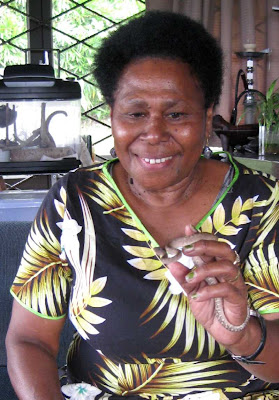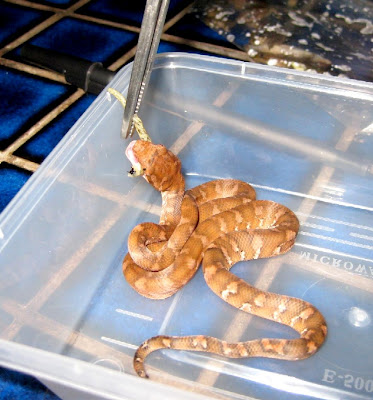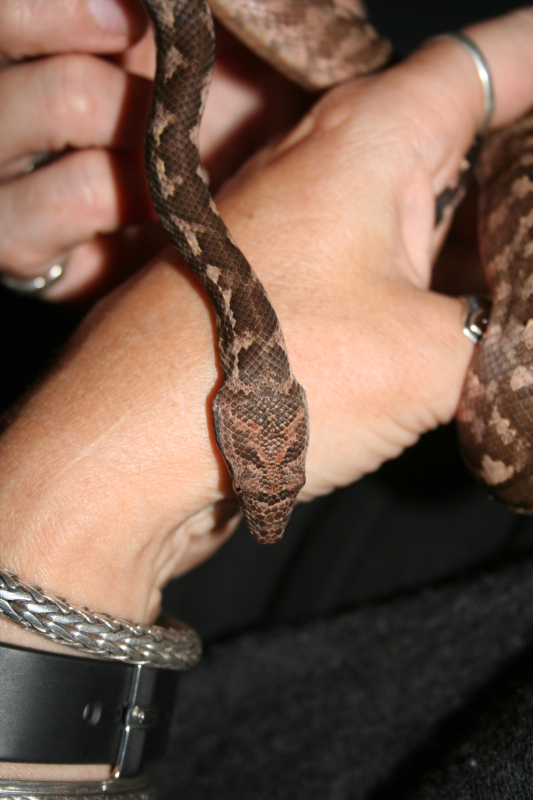Corrigan!

The smallest of the batch of babies born on 31 May is, of course, the one we will keep. Born at 7gms, now a hefty 12 gms, she is pounding gecko tails once a week (offered from chopsticks). And now she has shed her skin for the first time. Here are photos of her pre-shed and feeding, and 48 hours later in her new technicolour skin, glowing and fabulous. The name Corrigan comes from Celtic folk-lore: Corrigan, according to the folklore of Brittany is a female færy "Little Queen". She is said to have been one of the ancient druidesses, and therefore malicious towards Christian priests. Corrigan is fond of pretty human children, and is usually blamed for all changeling substitutions.





